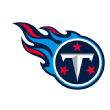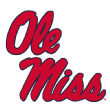Now that we both know the 2017 NFL draft class backward and forward, it's time to figure out who a few of these prospects compare to. Important caveats:
No two players are exactly alike. Often what we're talking about here are certain traits that are similar between two players.
These are prospect-to-prospect comparisons. For example: When we compare John Ross to DeSean Jackson, that means we think Ross is similar to Jackson when he was coming out of Cal.
The prospects we'll be reviewing, in addition to Ross: Clemson quarterback Deshaun Watson, Clemson receiver Mike Williams, Alabama tight end O.J. Howard, Washington safety Budda Baker, Michigan cornerback Jourdan Lewis, UCLA defensive end Takkarist McKinley and Ole Miss tight end Evan Engram.
Got it? Let's dig in, alternating comps and critiques as we go.


Kiper: John Ross to DeSean Jackson
Ross sort of looks like DeSean Jackson. They have slight frames that don't fit with how traditional No. 1 receivers look. But, man, are they blazing fast (4.22 vs. 4.35 in the 40). They're electrifying big-play threats who could blow by defensive backs and take it to the house at any moment. Ross had a ridiculous 17 touchdown receptions last season. And they're stellar returners. Ross had four career kickoff return TDs at Washington, and Jackson had six career punt return TDs at Cal. I thought Jackson would be a late first-round pick, but he ended up dropping to the middle of the second round (No. 49). Ross could go anywhere from 20-40.
What say you, Todd? No surprise from Mel, going chalk out of the gate. This comp has been out there a bunch -- and for good reason. Two important differences: I think Ross is a crisper route runner at this stage than Jackson was coming out of Cal, while D-Jax was much more durable as a collegiate. Ross missed the entire 2015 season due to injury.


McShay: Deshaun Watson to Marcus Mariota
Watson is my 28th-ranked player now. Mariota ranked fifth overall in 2015, so they're not similar in that sense. While Mariota displayed better accuracy coming out of Oregon than Watson's tape at Clemson, they both struggled to marry their eyes with their feet when going through progressions. That's a product of the schemes they played in, which were very focused on playing as fast as possible. Just as Mariota faced a transition from a spread system, Watson will undergo an adjustment period in the NFL. From a leadership standpoint, neither Watson nor Mariota are super vocal behind the scenes, but they both are well-respected by their teammates. They've earned it through their humility, consistency and delivering when it matters.
What say you, Mel? This is a stretch, Todd, for the reason you mentioned at the beginning. Mariota was a much better prospect in 2015. Watson's completion percentage went up a couple of points by having Mike Williams catch the throws that were in his top wideout's vicinity. Mariota is on a different level than Watson, who should go in the second round but probably won't.


Kiper: Mike Williams to Alshon Jeffery
There was some question about Williams' ability to separate from defenders, but the 4.50 40 he ran at his pro day quieted doubters. Still, 40 times at pro days are almost always better than combine times, and Williams didn't work out at the combine. But his size and speed and ball skills remind me of Jeffery, who has always had a high ceiling, even if he didn't have great quarterback play at South Carolina. Jeffery dropped to the second round because of a down junior season, and six receivers were taken ahead of him. But he has had a better career, by far, than any of them. Just take a look. As I mentioned above, Williams made Watson better in 2016. There's no question.
What say you, Todd? One of the main similarities to me is how raw they both were as route runners coming out of school. Jeffery ran a limited route tree at South Carolina -- mostly go routes and slants -- and Williams was much of the same. He'll have to diversify his route tree in the pros.


McShay: O.J. Howard to Greg Olsen
Howard and Olsen almost have identical height/weight/speed metrics. The Alabama TE ran a 4.51 40-yard dash at 6-5¾ and 251 pounds. Olsen also posted a 4.51 40, while measuring 6-6, 254. But it's more than just the measurables that make these two similar. Olsen showed good development as a blocker during his college career. Howard added 20 pounds of strength at Alabama and improved immensely in this area, too. And as pass-catchers, they're both big plays waiting to happen down the seam. Howard and Olsen are rare breeds these days: You don't see many tight ends who are assets as blockers and field-stretching receivers.
What say you, Mel? This is an interesting one. I think Olsen is what teams hope Howard turns out to be, though the former Crimson Tide star has a higher ceiling. Coming out of college, though, Howard is a much better blocker than Olsen was, and Olsen was a more advanced receiver than Howard is at this point. Again, though, Howard has all the tools to be one of the best all-around tight ends in the league.


Kiper: Budda Baker to Tyrann Mathieu
Baker is one of my favorite prospects in this class. He makes plays all over the field, sort of like Mathieu. They're guys who might not fit in traditional safety roles because they're about 5-10 and under 200 pounds. But you can win with Honey Badger on your defense, and you can win with Baker too. I think he'll be on my All-Rookie Team next year, wherever he lands. Now, Baker doesn't have the ball skills of Honey Badger. Mathieu forced a ridiculous six fumbles in 2011, to go along with two interceptions and 1.5 sacks. Baker had 3.0 sacks, two picks and a forced fumble last season. Mathieu went in the third round because of his off-field issues, and Baker will be off the board in the second. I've said before that I think he'd be a top-15 pick if he were bigger.
What say you, Todd? Both of these guys have great instincts and a nose for the football. I definitely see the comparison. Baker has the ability to move around the defensive secondary and be a nickel piece for a defense, much like Mathieu has been in Arizona.


McShay: Jourdan Lewis to Jason Verrett
This is taking Lewis' recent off-field incident out of the equation. Outside of the Michigan CB having slightly longer arms, the two have almost identical measurements: Verrett checked in at 5-9, 189, while Lewis is 5-10, 188. Top-end speed is a biggest difference, with Verrett running the 40 at 4.38, compared to 4.54 for Lewis. Otherwise, they're very similar. They are two of the best corners I've ever evaluated in terms of their ability to read receivers and anticipate their breaks. Lewis has the athleticism and body control to be a shadow corner in the NFL. One other similarity: Verrett and Lewis are physical for undersized corners. They'll tackle, they'll compete, they'll lay it on the line.
What say you, Mel? Sure, I see the size and style of play comparisons, but Verrett is and was much more explosive. That's a big difference in 40 times. Verrett outdid Lewis in every combine drill and is just a better athlete than Lewis. I like Lewis as a player, but give me Verrett.


Kiper: Takkarist McKinley to Robert Mathis
McKinley reminds me of Mathis. He could be a great pass-rusher. Now, I'm not saying he's going to have a borderline Hall of Fame career like Mathis, but they have similar traits. Both 6-2, around 250, both fit outside in a 3-4, both are speed pass-rushers. McKinley's going to go much higher than Mathis did -- maybe in the top 15, while Mathis was a fifth-rounder. I just love how McKinley attacks. He has double-digit sack potential. Mathis did that five times.
What say you, Todd? I see the similarities with their first-step quickness and natural speed off the edge. Mathis always seemed to play with a chip on his shoulder, and because of what McKinley has been through in his life, he shows that same kind of determination and effort. McKinley has the best motor of all defensive prospects we studied on tape this year.


McShay: Evan Engram to Jordan Reed
Like Reed, Engram is not your traditional in-line tight end. Both are polished route runners and mismatches down the down the field because of their size/speed combination, though Engram is on a different level speed-wise (4.42 at 234 pounds versus Reed's 4.72 at 236). Some teams are actually considering drafting the Ole Miss TE as a wide receiver. He's a willing blocker, like Reed, but you want him removed from the formation and running routes so defenses have to account for him. The closer we get to the draft, the more I think Engram will go in Round 1. And if he does, it'll show the increased emphasis on finding matchup pieces on offense compared to when Reed went in the third round of the 2013 draft.
What say you, Mel? This is your best one yet, Todd. I love Reed when he's healthy, and Engram is flying up draft boards. One important note, though: Reed was a project coming out of Florida because he began his career at quarterback. Teams know exactly what they're getting in Engram -- a dynamic pass-catcher.


